What is Decaf Coffee? The Good, The Bad, and the Ugly
I’ve been brewing all kinds of coffee for years now, with more and more people asking for decaffeinated coffee. I personally don’t drink it, but being the intrigued barista I am, I recently went into research mode to find out everything I could about it.
In this article, I’ll share everything I’ve learned about decaf coffee, from how it becomes caffeine-free, the proper way to brew it, and even some surprising health benefits.
So grab your favorite mug, settle in, and get ready to learn everything you need to know about decaf coffee.
What is Decaf Coffee and Why Do Some People Prefer It?
Decaf coffee, short for decaffeinated coffee, refers to any type of coffee from which most or all of the caffeine has been removed through various methods I will go into below. It offers an option for those who love the flavor of coffee but either want to limit their caffeine intake or avoid it altogether.
Coffee beans, tea leaves, and cacao seeds are naturally caffeine-rich. Yet, not everyone has the tenacity to take all that pure, naturally occurring caffeine with each cup of coffee.
Here are the main reasons why some people need to, or should consider switching to decaf:
- The withdrawal symptoms of caffeine, once the effect wears off, are a drawback of caffeinated drinks.
- Some people are sensitive to caffeine, increasing anxiety, agitation, palpitations, and blood pressure.
- Drinking coffee too late in the day might cause sleeplessness.
- Caffeine can induce GERD by loosening the esophageal sphincter.
- And others may cut down on their caffeine because they are expecting a baby.
Regardless of the reason, drinking coffee has a definite vibe that doesn’t need to go because of the caffeine.
Is There a Naturally Decaffeinated Coffee Bean?
No, there are no coffee plants that grow caffeine-free coffee cherries.
Back in 2004, lots of press releases circulated the headlines about a naturally caffeine-free plant. Among the many attempts to engineer the enzyme on the caffeine pathway of every coffee plant, only one research program in Japan in 2001 had given good news.
Using RNA interference, which is a gene-silencing technology, Japanese researchers were able to cut down as much as 70% of the caffeine from the controlled plant. Yet, it’s still far from the goal of cultivating a naturally caffeine-free coffee plant. As of today, the research is still ongoing and kept under wraps.
But why is it so challenging to create a caffeine-free coffee plant?
The answer lies in the ability of caffeine to defend coffee plants against insects. Caffeine serves as a natural insecticide for the coffee plant. Wild coffee plants with no caffeine are at a disadvantage. However, other chemicals may provide the same protection against these natural predators.
With caffeine removed from the plant, how will the coffee plant be able to protect itself from insects? It can’t, so the search for a naturally caffeine-free coffee plant continues…
How is Coffee Decaffeinated? (The 3 Methods)
There are three methods to decaffeinate coffee that are still used in 2023, all of which can remove 97% to 99% of the caffeine:
- Swiss Water Process
- Chemical-based Process (Direct and indirect solvent)
- Liquid Carbon Dioxide Method (CO2 Process)
Let’s talk about each in detail.
1. Swiss Water Method
The Swiss Water Method is a chemical-free decaffeination technique that uses Green Coffee Extract (GCE) to extract caffeine from green coffee beans.
To avoid confusion, the method is called the “Swiss Water Method” not because it uses water from the Swiss Alps but because this method was developed in Switzerland.
The Swiss Water Method (also known as the SWP Method, the Dihydro-oxide process, the Activated Charcoal Decaffeination) was first introduced in 1933 in Switzerland. In 1980, it was further developed by Coffex S.A. to become a viable commercial decaffeination method.
By 1988, the Swiss Water Company finally introduced this chemical-free decaffeination process to the market. It is the only company in the world with a decaffeination facility certified by the OCIA and Aurora Certified Organic as well as by the Kosher Overseers Association.
What makes the SWP Method unique is that it does not rely on solvents to extract caffeine from green coffee beans. It depends on its solubility and the movement of water (osmosis) to take out caffeine.
To help you understand how the Swiss Water Method works, here is a video on the process.
To sum it up:
- Green coffee beans are pre-soaked in a caffeine-free green coffee extract (GCE). They expand by 100% which is a preparation for caffeine extraction.
- The liquid used during the pre-soaking is then removed from the coffee columns and returned to its original tank.
- The caffeine-lean green coffee extract (GCE) from another tank flows into the coffee columns. This will begin the counter-current extraction process. The GCE is water-rich with soluble coffee components.
- The decaffeination happens by controlling the time, temperature, and flow to drive the caffeine out from the green beans to the GCE. The caffeine level in the GCE is then maintained right under the equilibrium to optimize the extraction of caffeine.
- The beans from the first tank are then discarded, while the decaffeinated ones from the newest, fourth tank, are sent to the multizone dryer for packing.
- An evaporative drying process is used to remove moisture from the beans. This moisture is converted into vapor and is removed through the air exhaust stream.
- The caffeine-rich GCE is moved from the coffee columns to the carbon columns, which contain activated charcoal filters. In those 4 carbon columns, the caffeine-rich GCE is filtered.
- Once the filtering is done. The caffeine lean GCE is returned to its original tank and ready to be reused again.
The only argument against this method is that the decaffeinated coffee beans in this process lose their distinct flavor from the same solution.
If you noticed, the extracted liquid from the first batch is used and mixed with the liquid coming from the fresh batch. Thus, the blending of flavors will result in muting the subtle notes of each batch.
I can confirm that this is true, I’ve yet to brew decaf that is as pure and robust as unaltered coffee.
2. Chemical-Based Process
The Chemical-based process of decaffeination has two subtypes, the indirect-solvent process and the direct-solvent process. I’ll get into their distinct differences after talking about the actual chemicals used here.
The widely used solvents in the chemical-based process are:
- Methylene chloride
- Ethyl acetate
Benzene, dichloromethane, trichloroethylene (TCE), and chloroform also used to be coffee chemical solvents, but they were flagged as hazardous chemicals and considered industrial waste.
Thus, methylene chloride and ethyl acetate became the solvent of choice.
According to the Food and Drug Administration, methylene chloride doesn’t pose any health risks. It is a colorless, volatile organochloride compound with a moderately sweet aroma.
It is FDA-approved under certain conditions wherein its presence in the food should be as:
- Residue from the extraction of spices at a level not exceeding 30 parts per million
- Hops extract at a level not exceeding 2.2%
- Extraction solvent of green coffee beans at a level not exceeding 10 parts per million in soluble decaffeinated coffee extract and decaffeinated roasted beans.
The 2nd solvent of choice is ethyl acetate, which is naturally derived from ripening fruits including blackberries and apples. However, deriving ethyl acetate in a “natural” way is impractical and costly. So, some roasters opt for synthetically derived ethyl acetate (commercially produced from ethyl alcohol and acetic acid.)
Yet, between methylene chloride and ethyl acetate, the latter is much preferred. That’s because the synthetically-derived ethyl acetate in food and beverage is not as safe as methylene chloride.
But don’t fret! The FDA assures you that commercially produced additives are still safe…
Now that we’ve explained the chemical solvents used in this process. Let us proceed with the processes that incorporate these solvents to extract caffeine.
Indirect-Solvent-Based Process
The decaffeination using indirect solvent involves the following procedures:
- The green coffee beans are soaked in near-boiling water for several hours to extract the oils and other flavor elements of the beans.
- Next, the water used for soaking is separated and transferred to another tank. The drained, swelling beans were rinsed with a chemical solvent (either methyl chloride or ethyl acetate) for 10 hours, where the chemical molecules bond with the caffeine molecules.
- Afterward, the rinsed beans are heated to remove the solvent and the caffeine through evaporation.
- Lastly, the green beans are reintroduced to the water. The beans are soaked in the original liquid to reabsorb the coffee oils and flavor elements left in the water.
Direct-Solvent-Based Process
The procedures in Direct-Solvent-Based are different from Indirect in one significant way: In this process, ethyl acetate is used. If you’ve seen a coffee tagged as “decaffeinated naturally”, it probably means that ethyl acetate is the extraction solvent used.
To decaffeinate coffee with the direct-solvent-based process, the following procedures are done:
- For 30 minutes, the green coffee beans are steamed to open their pores.
- Once the beans’ pores are open. These are washed repeatedly for 10 hours with ethyl acetate (or with methylene chloride) as the extraction solvent until the caffeine separates from the beans.
- They are then drained and re-steamed to completely remove any residue of the solvent.
If the bag of decaf coffee doesn’t mention the process used in decaffeination, chances are, the coffee is decaffeinated using both processes: the direct- and indirect-solvent-based methods.
3. CO2 Process
Another decaffeination procedure that does not need a chemical solvent is the Carbon Dioxide process (also known as CO2 Method, Supercritical Carbon Dioxide Method). In this process, the supercritical carbon dioxide in its liquid form will serve as the extraction agent.
The CO2 method is the most recent and most expensive caffeine extraction method. A chemist from the Max Planck Institute named Kurt Zosel accidentally discovered this method in 1967. He noticed that caffeine (a simple alkaline) dissolves in high-pressured carbon dioxide. After much effort in developing this method, he finally patented the CO2 method in 1970.
Here are the steps to better understand how the CO2 method works:
- The milled but unroasted green coffee beans are soaked in a supercritical carbon dioxide liquid. This liquid is superior to water as it has the desirable diffusive properties of a gas and is much denser than a liquid.
- The beans are moved to a stainless steel extraction vessel. Once the extractor is sealed, the carbon dioxide is compressed at 1000 pounds per square inch at a temperature of roughly 200 degrees Fahrenheit for ten hours.
- The CO2 dissolves the caffeine bond and draws the caffeine out from the beans, without modifying the large molecules that are responsible for the taste of the beans.
- The caffeine-rich CO2 is then transferred to the absorption chamber, where the pressure is released. The CO2 returns to its gaseous state while the caffeine molecules are left behind.
- The caffeine-free carbon dioxide is pumped back into the pressurized container, while the caffeine captured and filtered in the activated carbon filters is moved to another vessel.
- The decaffeinated coffee is moved to a chamber to remove the moisture, dry, and where it is finally repacked.
The caffeine captured is made into a white powder and is sold to industries that use caffeine as ingredients in their products. Such industries are pharmaceuticals, cosmetics, and companies that manufacture high-caffeinated beverages like soft drinks and energy drinks.
When it comes to food safety regulations. The FDA affirms that the use of carbon dioxide in food manufacturing is “Generally Recognized as Safe (GRAS)”. With certain conditions to meet, such as :
- The CO2 must be of a purity fitted for its intended use.
- The CO2 is used according to the “current good manufacturing practice”.
- The CO2 is used as a “leavening agent, a processing aid, a propellant, an aerating agent, and as a gas defined in chapters 170.3(o)(25) of Food and Drug Administration under the subchapter B (food for human consumption).”
This method is widely used to commercially decaffeinate coffee in large quantities.
How Much Caffeine is in Decaf Coffee?
Generally, decaf coffee still contains 7 milligrams of caffeine in every 8-ounce cup of coffee, as only 97-98% of caffeine can be removed. Compare that to the regular 70-140 mg of caffeine for a regular cup of coffee, it’s not that bad.
The point here is that although most of the caffeine from coffee can be removed, decaffeinated coffee still has a bit left.
Does The Type of Beans Used Affect Caffeine?
While decaffeination removes up to 99% of caffeine, the basis from where you start should be considered.
Specifically, many coffee bean bags are a blend of two types – the Robusta and the Arabica beans.
Robusta has twice as much caffeine as Arabica, giving Robusta a more bitter, harsher taste than the delicately sweet taste of Arabica beans.BIGCUPOFCOFFEE.COM
BigCupOfCoffee.com
When these beans complete a decaffeination process, Robusta will have more caffeine left than Arabica. Thus, there’s more variation in caffeine content and taste if you brew instant decaf coffee made from Robusta/Arabica blends or from a single origin.
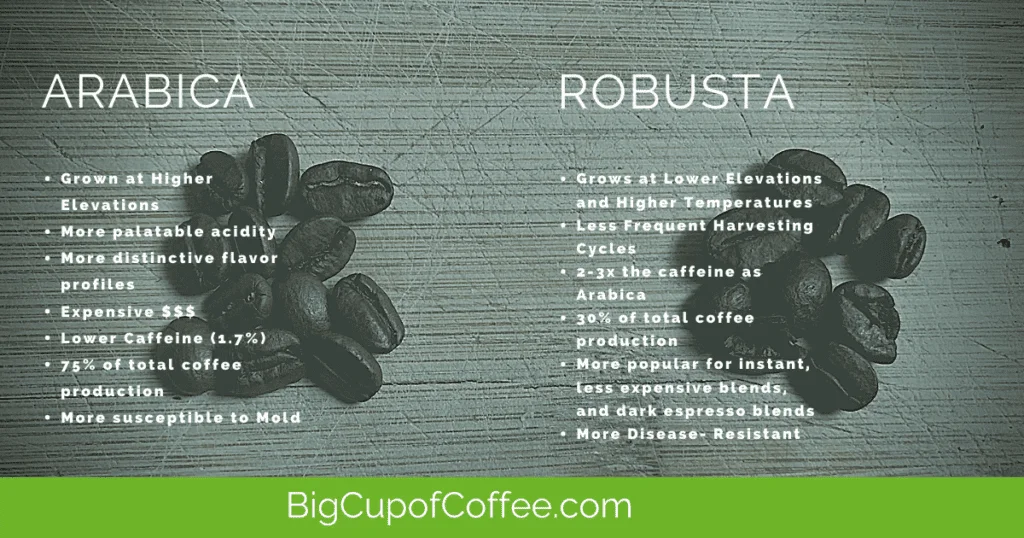
Myth busting: Roasting Level and Caffeine
Many believe that the darker the roasts, the higher the caffeine content. This is not true.
It is not also true that more caffeine is burned off the longer and darker you roast.
However, roasting alters the mass and volume of coffee, which is the basis for this myth.
- If you measure your coffee by scoops (volume), light roasted coffee is denser, so it will have more caffeine than a similar scoop of dark roasted coffee. Measured by volume, a dark roast will weigh less.
- But if you weigh the coffee (mass), darker roasts will have more caffeine.
This is why there’s generally less caffeine in dark-roasted coffee.
But if the beans are decaffeinated in their raw form before being roasted, know that there’s already little caffeine left.
It’s also interesting to note that the decaffeination process leaves them darker than their regular counterpart, so the color is not an accurate indicator of the roast level of decaf coffee.
Is Decaf Coffee Bad for You?
Whether or not a decaf coffee is bad for you depends on the method used in removing the caffeine and the amount of coffee you consume each day.
Too much of ANYTHING can be bad, that’s why every doctor’s advice is to do things in moderation. The same thing goes for drinking coffee.
Though the Swiss Method and CO2 method have no defined health risks, Methylene chloride remains controversial. While it might be a better alternative to Ludwig Roselius’ benzene as an extraction agent, the fact that Methylene chloride can also be found on paint strippers, adhesives, and automotive products should raise your eyebrows.
However, the FDA assures the public that the trace amounts of methylene chloride in decaf coffee have little to no effect on our health. That’s because the agency strictly commands that the methylene chloride in decaf coffee should not exceed 10 parts per million (0.001%) in the final product.
Health benefits of Decaf Coffee
Let’s say you love the taste of coffee, it motivates you to get through your day, and going without it would cause deep sadness.
There are several positive health benefits of caffeinated coffee, so if a low-caffeine diet was prescribed for any reason, then decaf coffee is – without a doubt – a “healthy” choice for you.
But since decaffeination can result in stripping not only caffeine but also around 15% of antioxidants and other important compounds that are beneficial to our health, I can’t help but wonder if it’s still as healthy as regular coffee.
The answer lies in the many studies that linked decaf coffee to be as valuable as regular coffee.
- According to a 2014 meta-analysis based on a Harvard study published in one of the journals of Diabetes Care, people who drink 6 cups of coffee per day tend to have a lower risk of contracting Type 2 Diabetes by 10%, regardless of the caffeine level.
- A BMJ 2017 study revealed that decaf coffee has little to no direct association with multiple health risks. These are reviewed from the 201 meta-analyses of observational research about the consumption of regular and decaf coffee.
This last study is especially interesting since it debunked the myths about drinking decaf coffee and found favorable results from the meta-analyses reviewed. These are:
- Lowers risk of premature death
- Lowers risk of hypertension and other cardiovascular diseases
- Negligible effect on the lipid profile
- Lowers risk of developing lung cancer
- Lowers risk of renal stones and gout
- Lowers risk of Parkinson’s disease
Even if you drink coffee without caffeine, it still has plenty of health benefits.
Which Decaf Should You Choose?
There are no labeling rules that require coffee brands to disclose the decaf processes they used. Coffee brands have to follow what the FDA had mandated about removing at least 97 percent of caffeine from the coffee beans, but how they do is can be a mystery.
To make sure you won’t be brewing whole bean or instant decaf coffee with residues of synthetic solvents, look for coffee bags with organic seals. These guarantees that the coffee plants are free from insecticides and pesticides, and chemicals used for some forms of decaffanation.
BIGCUPOFCOFFEE.COM
If by any chance the coffee beans you pick out are not organic, you can ask your supplier about the method used in decaffeinating. If any of the two chemical-based processes were used there’s a big chance that the coffee has trace amounts of the chemical solvent residue.
Have you tried a cup of decaf coffee? Did it taste different to you? Or maybe you’ve gone cold turkey and only drink decaf? Please share with us your decaf experience in the comments below.


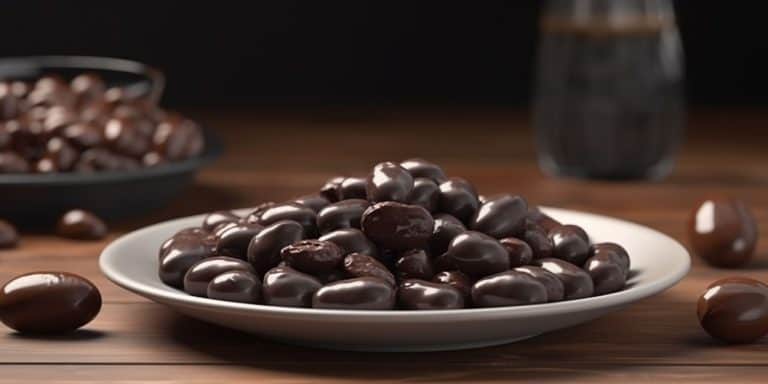
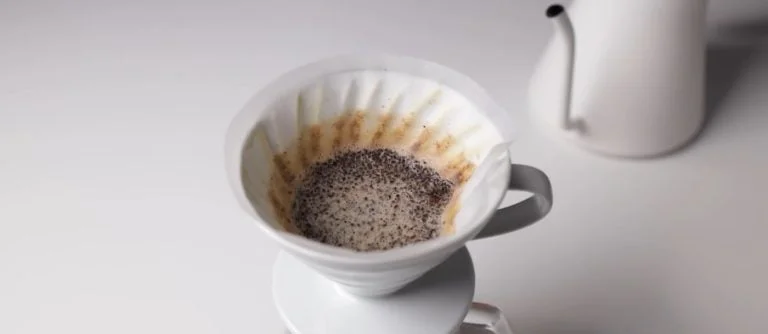
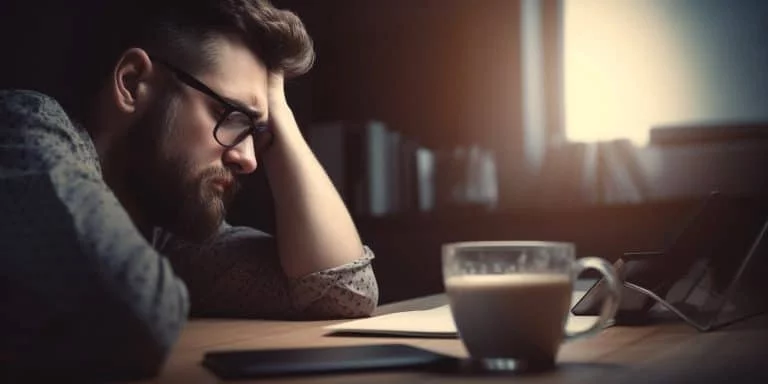
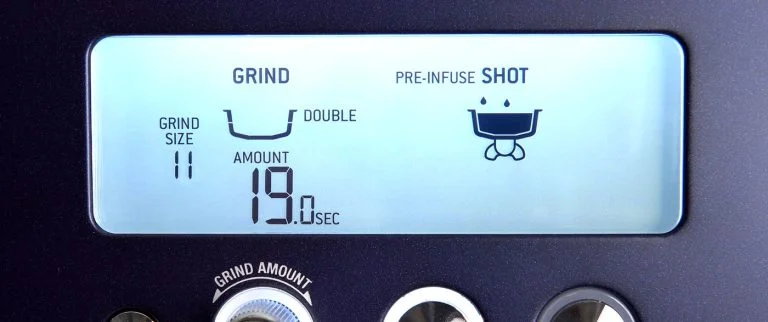
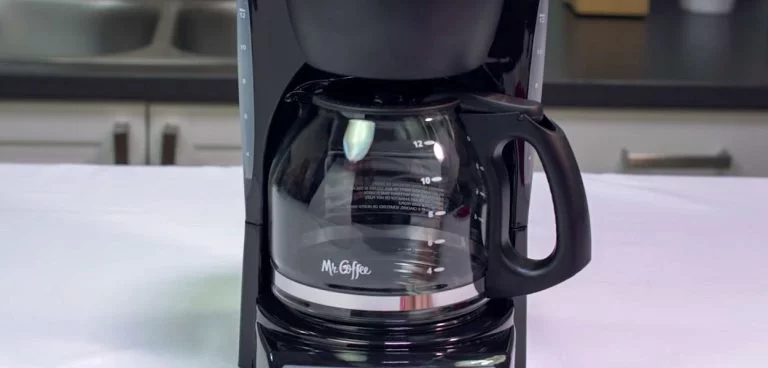


Hey, learned quite a bit, I’ve always wondered why my decaf espresso doesn’t quite taste like the regular shots I’m used to. Does the roasting level not have as much of an impact on caffeine as I thought, or is it just one of those pervasive coffee myths?
As a dietitian and a coffee enthusiast, I truly appreciated the comprehensive breakdown of decaffeination methods highlighted in the article. It’s often my job to advise clients on healthier options, and understanding that there are different processes, like the Swiss Water Method, that don’t involve chemicals provides a positive alternative. However, I’m curious if the article could expand on the nutritional impacts, if any, that decaffeination may have on coffee. Are there significant differences in antioxidant content between regular and decaf brews that might affect health benefits?
Hi Maxine, in the Health benefits of Decaf Coffee section, I link to a study that showed that around 15% of antioxidants are removed as a result of decaffanation. So not much.